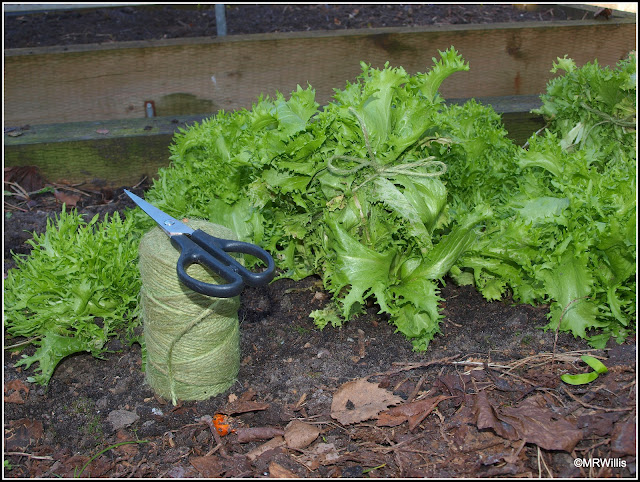Last year I accidentally sowed my Endive seeds a lot later than usual. I think I was confused by the additional responsibilities of looking after the plot at Courtmoor Avenue! Anyway, I had almost resigned myself to not having a worthwhile harvest of what is one of my favourite salad vegetables, but nevertheless decided to see if I could persuade the Endives to survive the Winter.
For the last several months, the Endives have been underneath a couple of my "Longrow" tunnel cloches (seen in the photo below), and since about Christmas they have also been covered with a double layer of horticultural fleece. Because of this they have not been very visible, and it was thus a pleasant surprise when (searching for ingredients for a salad) I lifted the coverings to look inside.
Well, the plants are individually not very big, but they look very healthy - and there are quite a lot of them. After picking a couple, I think there are now about 15 left, and each one provides enough for a meal.
The Endives are of several different varieties. Last year I made a mixture of seeds from several part-used seed-packets and sowed them randomly. Mostly they are the frizzy type, like this:
But there are a couple with wider, plainer leaves, like this:
And one very tiny but very frizzy one:
As most readers will know, Endives do have a certain level of bitterness (I like this!), and it is traditional to blanch them to reduce it. My method is to bunch them up by gathering all the leaves into the centre and then tying them tightly with soft string. The more robust outer leaves exclude the light and the inner leaves soon become paler and sweeter.
Here's a closer view of one that has been tied:
When blanching Endives it is important to do it when the leaves are dry. If the leaves are wet they tend to rot very quickly. Blanching using this method takes anything from a few days to a couple of weeks.









No comments:
Post a Comment
Thank you for taking time to leave me a comment! Please note that Comment Moderation is enabled for older posts.